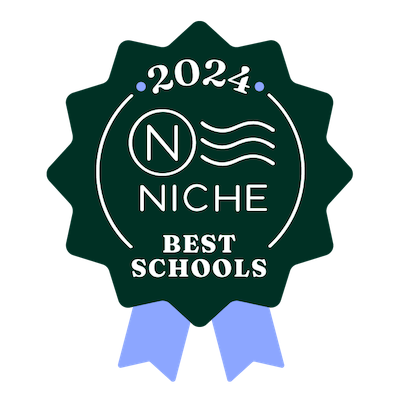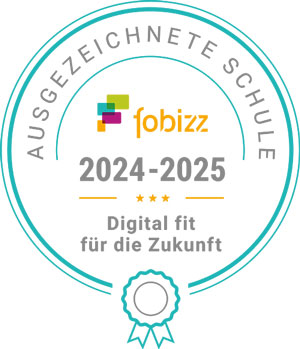Counselorin der Klassen 5-12
Das Hauptziel des Counselingprorammes ist es, eine Umgebung zu schaffen, welche die geistigen und körperlichen Bedürfnisse der Schülerinnen und Schüler unterstützt und fördert. Frau Klara Fabina ist für die Klassen 5-12 zuständig und bietet Einzel- und Gruppenberatung, Klassenberatung, Schülerbeobachtung, College Beratung, Empfehlungen und Eltern- und Lehrerunterstützung an. Sie ist auch die Testkoordinatorin für die PSAT, SAT und AP Examen. Die Counselorin ist außerdem an der Organisation und Koordination von Schulprogrammen, die sich mit Drogenprävention und Selbstbehauptung der Schülerinnen und Schüler befassen, beteiligt. Mediation und Krisenintervention für Schülerinnen und Schüler werden ebenfalls angeboten.
Frau Fabina arbeitet seit dem Jahr 2000 an der GISW. Sie hat an unserer Schule ihr Abitur gemacht, und ihren Bachelor of Arts und Master of Education in School Counseling an der Univeristy of Maryland, College Park erhalten.
Frau Fabina ist montags bis freitags von 8 Uhr bis 15 Uhr in ihrem Büro. Termine können entweder per Telefon (301.767.3805) oder per E-Mail counselor@giswashington.org vereinbart werden.
> ONLINE COLLEGE FAIR: www.collegefairsonline.com
Informationen zum Counseling
Klicken Sie bitte die Themen, die Sie interessieren an.
Crisis hotlines and resources (apa.org)
The Trevor Project | For Young LGBTQ Lives
Community Resources
EveryMind
301-424-0656
Crisis prevention and intervention services.
Montgomery County Crisis Center
240-777-4000 or walk-in
24/7 immediate response to mental health and situational crises.
Montgomery County Access to Behavioral Health Services
240-777-1770 / 240-777-4710 or walk-in
Assistance with obtaining appropriate outpatient mental health or substance use services for individuals eligible through the public mental health system.
Child and Adolescent Behavioral Health Services
240-777-1432
Outpatient mental health services for children, adolescents, and their families.
Screening and Assessment Services for Children and Adolescents
240-777-1430
Substance use assessment and treatment referrals.
Sheppard Pratt Care and Services
301-840-2000
Community mental health services and programs for families.
ChildLink
Information and referral service for children birth to 5 years old and their families.
2-1-1 Maryland
24/7 access to over 5,000 organizations and programs across the state that provide community health and human services.
Montgomery County BetheOne
Information on suicide and substance use prevention for teens and their families.
National Resources
National Suicide Prevention Lifeline
Substance Abuse and Mental Health Services Administration
The Society for the Prevention of Teen Suicide
Depression and Bipolar Support Alliance
Children’s Mental Health Matters! Family Resource Kit (in english and spanish)
Frau Fabina, Counselorin der Weiterführenden Schule, und Frau Schweitzer, Counselorin der Grundschule, möchten Ihnen Informationen im Bereich „Counseling“ zukommen lassen. Wir hoffen,Sie finden die Informationen hilfreich und interessant. Viel Spaß beim Lesen!
Liebe Eltern,
wie Sie vermutlich schon erfahren haben, verlangt die GISW, ebenso wie viele andere private und öffentliche Schulen, Sozialstunden von Schüler:innen der Klassen 8 – 12.
Jedoch im Gegensatz zu öffentlichen Schulen, die 75 Stunden gemeinnütziger Arbeit verlangen, müssen bei uns nur insgesamt 40 Stunden eingebracht werden.
Schüler:innen können diese Stunden durch soziale Arbeit innerhalb des Curriculums, der Schule oder der „Community“ ableisten.
Grundsätzlich können die Sozialstunden nur von einer als „nonprofit“ steuerbefreiten und gemeinnützigen Organisation anerkannt werden.
Alten- und Pflegeheime (Assisted–living facilities, nursing homes) sind die einzigen Ausnahmen von dieser Forderung nach Gemeinnützigkeit. (Liste von Organisationen, die Community Service hours im County anbieten: www.montgomeryschoolsmd.org/departments/ssl/ )
Im Rahmen des Programms wird eine Arbeitsstunde außerhalb der Unterrichtszeit als eine Sozialstunde anerkannt. In einem Zeitraum von 24 Stunden können höchstens acht Stunden abgeleistet werden.
Alle sozialen Aktivitäten müssen generell in einem öffentlichen Rahmen stattfinden und von einem verantwortlichen Mitarbeiter der entsprechenden Organisation angeleitet werden.
Eltern oder Verwandte können nicht als Verantwortliche für ihre eigenen oder verwandte Kinder dienen.
Wir möchten Ihnen nun einen Überblick über die notwendigen Schritte zum Erwerb von Sozialstunden geben:
Schritt 1:
Schüler:innen können sich das entsprechende Formblatt (SSL Activity Form) herunterladen oder eine Kopie von Frau Fabina bekommen.
Schritt 2:
Schüler:innen entscheiden sich für eine oder mehrere Möglichkeiten -entweder innerhalb der Schulgemeinschaft oder aus dem öffentlichen Bereich von Montgomery County.
Sollten Fragen bezüglich der Anerkennung der Organisation bei einzelnen Schülern, die Sozialstunden ableisten wollen, auftauchen, sollten diese mit Frau Fabina vor Ableistung der Stunden besprochen werden.
Schritt 3:
Schüler:innen leisten die geforderten Stunden ab und füllen das oben genannte Formblatt aus. Der verantwortliche Mitarbeiter bestätigt die Stundenanzahl mit seiner Unterschrift.
Schritt 4:
Die Schülerinnen und Schüler bringen Frau Fabina das ausgefüllte und unterschriebene Formblatt, das dann in eine elektronische Liste übertragen wird.
Schülerinnen und Schüler des Jahrgangs 12: Für die Zulassung zur Graduation (High-School-Diploma) müssen die ausgefüllten und unterschriebenen Formblätter bis spätestens zum 01.06. des Schuljahres abgegeben werden.
Die Schüler:innen können selbstverständlich ihre Sozialstunden auch während der Sommerferien leisten. Die Formblätter müssen spätestens bis zum letzten Freitag im September des neuen Schuljahres bei Frau Fabina abgegeben werden.
Ebenso können Schüler:innen ihre gesamten Sozialstunden auf einmal leisten. Beispiel: ein Schüler der 9. Klasse entrichtet 40 Sozialstunden ( für den Jahrgang 9 bis 12) während der Ferien und erfüllt damit die Anforderung. Weitere Sozialstunden sind nicht mehr notwendig.
Bitte informieren Sie sich in regelmäßigen Abständen hier auf der Website der Schule.
Freiwilligenarbeit ist eine wichtige und wertvolle Erfahrung. Auf der „Montgomery County Public School Homepage“ finden Sie folgende Einschätzung, der wir uns alle nur anschließen können :
„Quality service learning provides the student with knowledge, skills, attitudes, and career exploration opportunities that lead to effective citizenship in an increasingly diverse and interconnected world.”
Sollten Sie noch Fragen zu unserem Programm haben, zögern bitte Sie nicht Frau Fabina anzusprechen.
Auch nach tragischen Ereignissen ist mit passender Untestützung Heilung möglich. Wenn Du oder jemand der Dir nahe steht, emotionale Schwierigkeiten oder eine andere Art von Kummer hat - es gibt Hilfe. Mental Health Americas (MHA) gratis und vertrauliche 24/7 HOTLINE (301-738-2255) bietet emotionale Unterstützung, Informationen und Mittel, wie z.B. Suizidprävention und Krisenintervention. MHA bietet auch Unterstützung durch ihren SMS Service montags bis donnerstags von 16.00 bis 21.00 Uhr unter 301-738-2255 und einen Chat Services unter http://www.CrisisChat.org.









